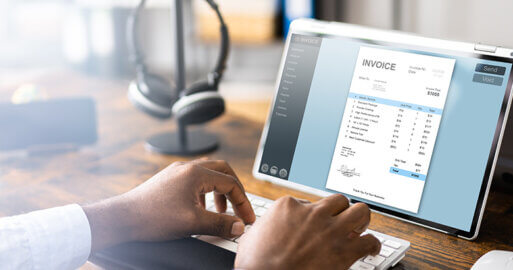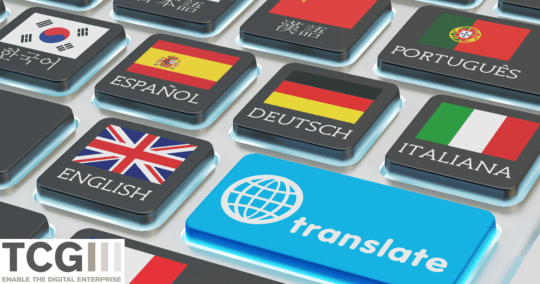Electronic Invoicing to Become Mandatory in the German B2B Sector: What, Why and How?

The introduction of e-invoicing in Germany marks a significant step towards the digital transformation of business processes and a more modern approach to financial transactions. In a world characterized by continual technological progress, Germany has recognized the need to replace paper-based invoicing with efficient electronic workflows. E-invoicing, in particular the standardized XRechnung format, plays a central role in this revolution and electronic invoices will be mandatory in the B2B sector from January 1, 2026.
This paradigm shift not only demonstrates Germany’s ability to adapt to modern technologies, but also underlines its contribution to sustainable development and the creation of efficient, transparent business environments.
In a previous blog post, we looked at the current developments in e-invoicing on a federal level. In this article, we will be focusing on the background to these developments. We will be looking at what an e-invoice actually is, its impact, advantages and technical requirements, as well as how solutions from SEEBURGER can help you master the transition.
Isn’t a PDF also an e-invoice? Defining an electronic invoice
A number of questions have already arisen, including the exact definition of an electronic invoice. The frequently held assumption that a simple PDF would suffice is unfortunately not correct. There are two crucial differences between manually created or scanned paper-based or PDF invoices and an e-invoice created to EU standards. These are its data structure and how the data is transmitted.
An e-invoice is an electronic invoice that has been created with a structured data format and is sent and received electronically. It distinguishes itself from PDF invoices in that it enables seamless, automated processing without the need to switch between different media.
It should be noted that an e-invoice:
- has been designed in a purely semantic data format. This means that the invoice data is in a format that permits a direct, non-detour import into a processing system.
- is based on an XML format that was primarily developed for machine processing and is not intended for manual visual inspection. However, you can use a visualization program to display the XML dataset in a human-readable format.
The figure below illustrates the differences between paper-based, PDF and e-invoices. While paper-based and PDF invoices are visual representations that can be read by humans, an e-invoice is a structured data set that has been optimized for automated processing.

What are the advantages of an e-invoice?
The introduction of e-invoicing in Germany and many other countries is part of a broader trend towards the digitalization of business processes. It aims to replace manual and paper-based processes with more efficient electronic processes.
You can expect to benefit from the following:
- E-invoices can make business processes significantly more efficient. Electronic invoices can be automatically integrated into accounting systems, saving time and resources. In addition, using a standardized format such as Germany’s XRechnung simplifies data exchange and increases interoperability between different systems, letting systems work together better.
- Switching to e-invoices enables companies and public administration to reduce the costs associated with the more time-consuming manual processing, printing and sending of paper invoices. This also reduces paper consumption and contributes to a more sustainable way of working.
- Electronic invoices speed up the payment process as data transmission and processing is automated, making it faster than for paper-based invoices.
- Introducing B2B e-invoicing boosts the digital transformation of business processes in Germany, as well as acceptance in society as a whole. This is a step towards modern, efficient and sustainable working methods at all levels and also in other areas of the economy.
Legal framework conditions may prescribe or encourage e-invoicing. Companies that issue invoices will need to make compliance a top priority. Below, let’s take a look at relevant laws and regulations.
Relevant laws and regulations for e-invoicing
The legal basis for the obligation to issue invoices electronically is Directive 2014/55/EU of the European Parliament and of the Council of April 16, 2014. In Germany, the regulations were laid down in the E-Government Act and have been continuously expanded.
The directive contains the following key aspects:
- The main objective of the directive is to create a common European standard for electronic invoicing in public procurement. Standardization is intended to facilitate the cross-border exchange of electronic invoices and increase efficiency in the public administrations of the member states thanks to interoperability between the disparate national systems. This standard has essentially been developed on the basis of the UN/CEFACT Cross-Industry Invoice (CII) standard.
- Member States are obliged to ensure that their contracting authorities can receive and process electronic invoices. In doing so, they must use the European standard EN 16931 for the structure of the e-invoice.
- The directive promotes the use of semantics (uniform assignments of meaning) to improve the comprehensibility and interpretation of invoice data.
What impact does this have on companies and consumers?
This naturally has implications for businesses and consumers.
The introduction of electronic invoicing has far-reaching implications for businesses and consumers. Companies are obliged to adapt their accounting processes to meet the requirements of electronic invoicing.
The benefits mentioned above naturally apply to both businesses and consumers. This digitalization also has other positive effects on efficiency.
Businesses, especially when interacting with public sector clients, must adhere to regulatory requirements related to e-invoicing. Failure to comply with such requirements can negatively impact business viability. In concrete terms, electronic invoices must meet specific technical requirements to comply with legal standards. This includes using specific file formats such as XRechnung and ZUGFeRD.
The standardization provided by e-invoicing helps to improve the accuracy of transaction data. Businesses and consumers also benefit from a more transparent presentation of financial information.
- Introducing e-invoicing could influence the way consumers pay their bills. The convenience of electronic payment methods could have an impact on payment behavior.
- The necessary introduction of security standards and data protection for e-invoicing can have a positive impact. For a start, implementing secure technologies protects consumers’ personal and financial data.
How can SEEBURGER help in the implementation?
A trusted expert in e-invoicing solutions, SEEBURGER can be at your side to ensure the smooth implementation of your e-invoicing and reporting systems. Our goal is to support you in implementing a simple, standardized solution encompassing all necessary regulations for your e-invoicing and reporting systems.
Our range of services extends across various e-invoicing standards, including EDI, ZUGFeRD, FacturX, XRechnung and Peppol, to meet the needs of the German market. We are also able to support global e-invoicing requirements. Our solutions are characterized by flexibility and can be used independently of your ERP system. At the same time, we offer seamless integration into SAP and have extensive expertise in optimizing the processing of incoming and outgoing invoices in SAP S/4HANA.
Our SEEBURGER Invoice Delivery Service enables you to send your customers and business partners invoices in the EN16931-based ZUGFeRD, FacturX or XRechnung formats. Secure and legally compliant, this can also be done independently of your ERP system via Peppol.
The SEEBURGER Invoice Portal Service lets you automate the processing of incoming e-invoices in an end-to-end process. This includes receiving the incoming invoices, posting into a ledger and integration into all current ERP systems. Our solutions optimize your e-invoicing process and ensure efficient and legally compliant processing of your invoices.
White Paper
Discover more on how to ensure compliance with international and country-specific e-invoicing regulations.
Read nowThank you for your message
We appreciate your interest in SEEBURGER
Get in contact with us:
Please enter details about your project in the message section so we can direct your inquiry to the right consultant.
Written by: Peter Fels
Peter Fels is Product Manager D-A-CH (Germany, Austria, Swiss) at SEEBURGER for the automated processing of incoming invoices for all non-SAP systems. Mr. Fels has many years of experience regarding the conversion from paper to the electronic invoicing processes.





